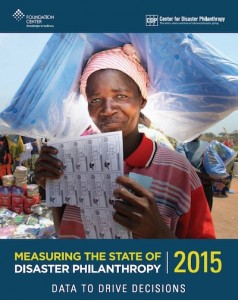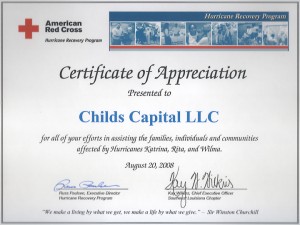The Center for Disaster Philanthropy has published the second edition of Measuring the State of Disaster Philanthropy 2015: Data to Drive Decisions along with online tools, including a dashboard and an interactive funding map. The online tools enable users to monitor contributions to support relief by disaster type, disaster assistance strategy and geographic areas impacted. The report and the online tools aim to help donors, government agencies, news media and other stakeholders understand the scale and scope of global disaster-related philanthropy. This information can inform more effective philanthropy by avoiding duplication of efforts and misuse of scarce resources.
According to Measuring the State of Disaster Philanthropy 2015, a total of $27.6 billion was given in response to disasters and humanitarian crises in 2013. Most of that sum was directed towards immediate response and relief efforts. While the largest share of the total was contributed by government donors and agencies, with the U.S. Federal Emergency Agency alone accounting for $11 billion, the report also found that the largest thousand U.S. foundations awarded $116.9 million, with an additional $60.1 million provided by smaller foundations, public charities, and international foundations. Outside the U.S., aid from the twenty-nine members of the OECD’s Development Assistance Committee totaled $13.6 billion, while another $2.4 billion was awarded by other donors and multilateral organizations.
The Center for Disaster Philanthropy is to be commended for collecting, analyzing and publishing this data, as it informs strategic decision making and may increase the effectiveness of disaster relief aid. However, and this bears repeating, it is a better use of funds to prevent and mitigate disasters than to respond to them. The challenge is that disaster mitigation efforts can be more difficult to assess and donors do not have the same visibility for such efforts as they do for the powerful (and generous) work of providing relief.



